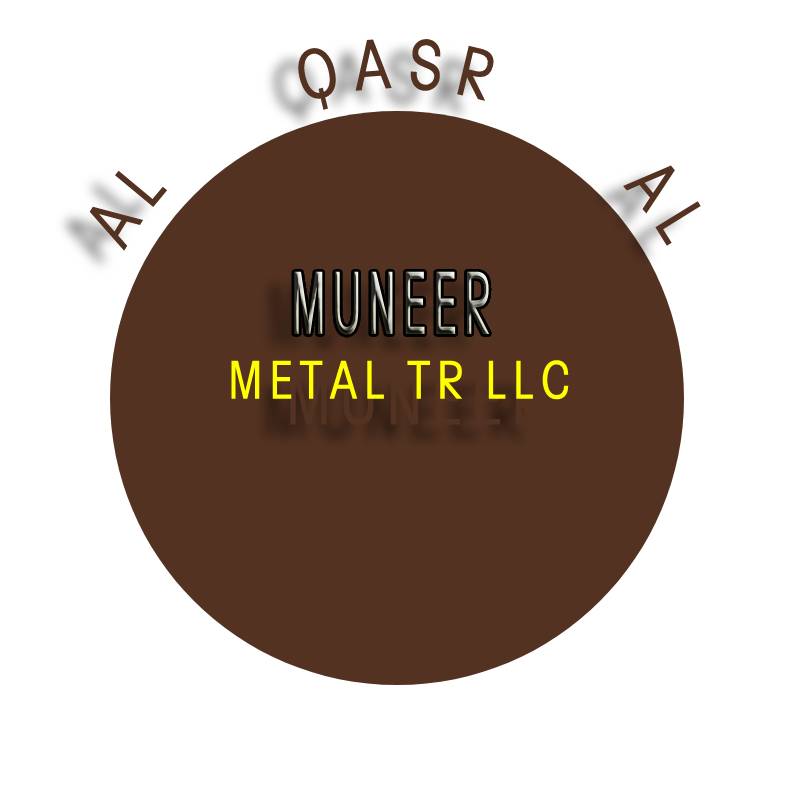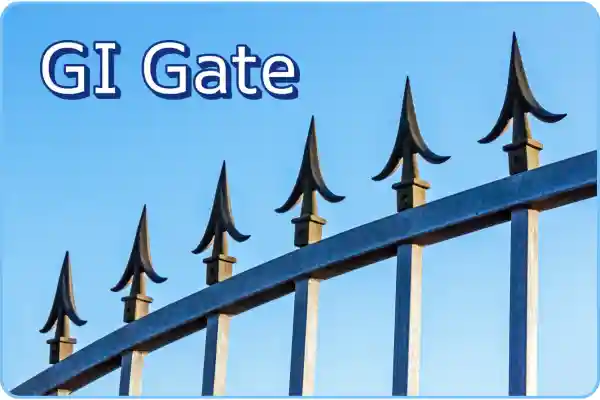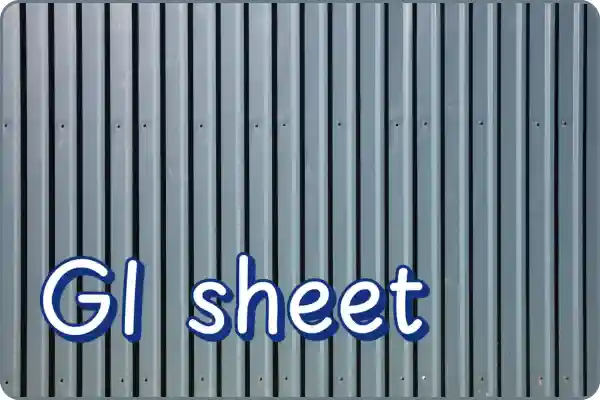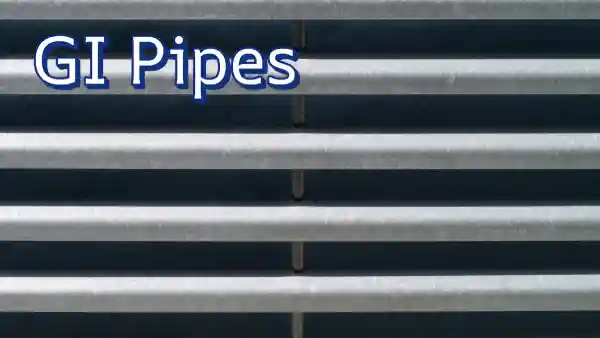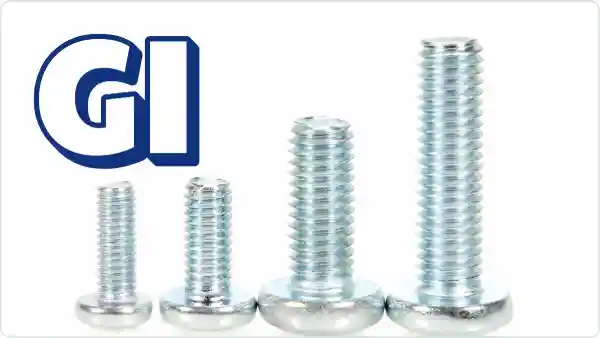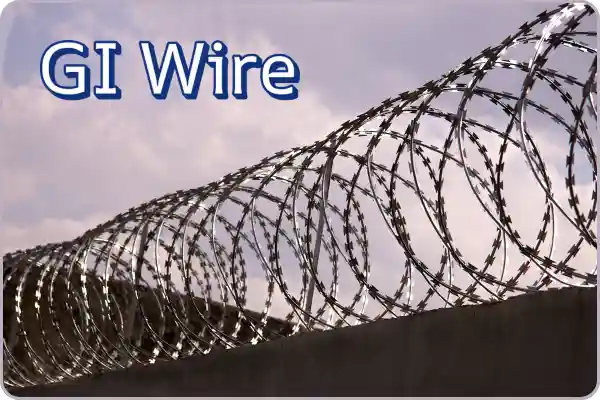What is a GI, galvanized Iron or galvanised Iron
Galvanized Iron, often abbreviated as GI, is a form of galvanised iron or galvanised steel that is coated with a layer of zinc. This zinc coating protects the underlying metal from rust and corrosion. The process of applying this zinc coating is called galvanization, and it significantly increases the durability and lifespan of iron steel products.
What does GI stand for and GI meaning
GI is the abbreviation for Galvanized Iron in American English and Galvanised Iron in British English. The spelling differs, but the abbreviation GI is used universally in both versions of English.
GI meaning Galvanized Iron, which refers to iron coated with a layer of zinc to protect it from rusting. The zinc coating prevents moisture and oxygen from reaching the iron surface, making it more durable and corrosion-resistant for various applications.
When iron is exposed to moisture, air, or water, it undergoes a chemical reaction known as rusting. This process involves the reaction of iron (Fe) with oxygen (O₂) in the presence of water (H₂O), forming iron oxide (Fe₂O₃·xH₂O), commonly known as rust. Over time, this rust flakes off, weakening the metal’s structure.
However, when iron is galvanized—coated with a protective layer of zinc—it becomes significantly more resistant to rust and corrosion. The zinc layer acts as a barrier, preventing water and oxygen from reaching the iron surface. Because of this enhanced durability, galvanised iron products are widely used in construction, industry, and household applications.
It is not a new invention. It has been used for more than 150 years and remains popular due to its strength, affordability, and resistance to weather. Protected layer works by acting as a barrier. Even if the surface is scratched, the zinc continues to protect the exposed metal underneath through a process called “galvanic protection.”
Examples of Galvanized Metal Products
There are many items around us that are made from galvanized iron. Here are some common examples:
Galvanized sheets
Galvanised sheets are flat iron sheets coated with zinc, commonly used in buildings, warehouses, and sheds. They provide excellent protection against rust and are suitable for roofing, wall panels, and structural cladding. Their durability and affordability make them ideal for long-term outdoor exposure in both residential and industrial construction.
Galvanised pipe for water
Galvanized pipe for water are iron pipes coated with zinc to resist corrosion. They were traditionally used in homes and buildings to supply water. Though now largely replaced by PVC or copper in new systems, galvanized pipes are still found in older constructions due to their strength and long-lasting performance.
Galvanized air conditioning ducts
Galvanized air conditioning ducts are used in commercial buildings, malls, hospitals, and factories. The zinc coating prevents rust from forming due to condensation or moisture in the air. These ducts ensure hygienic air distribution, resist wear and tear, and contribute to the longevity and efficiency of HVAC systems.
Street lamp posts and traffic signs
Street lamp posts and traffic signs are often made from galvanized iron to withstand outdoor weather conditions. These public infrastructure elements face sun, rain, wind, and pollution. Galvanization protects them from rust, reducing maintenance costs and ensuring safety, visibility, and durability in roads, highways, and urban areas.
Galvanized nail, screw, and bolt
Galvanised nails, screws, and bolts are commonly used in construction and furniture making. The zinc coating prevents rust, especially in outdoor or moist environments. These fasteners are ideal for joining wood, metal, or other materials, offering strength and durability in fencing, decking, roofing, and structural assembly projects.
Galvanized tubs
Galvanised buckets and tubs are traditional household items, especially in rural areas. Made from zinc-coated iron, they’re used for carrying water, storing grains, feeding animals, and washing clothes. These containers are strong, long-lasting, and resistant to rust, making them reliable tools in homes, farms, and small businesses.
Electrical boxes and conduits
Galvanized electrical boxes and conduits are used to encase and protect electrical wiring in buildings. The zinc coating safeguards the metal from moisture and corrosion, especially in damp or outdoor settings. These components ensure safety, prevent electrical hazards, and support proper cable routing in homes, offices, and factories.
Automobile parts
Some automobile parts, such as body panels, frames, and underbody components, are made from galvanised metal to prevent rust and improve durability. These parts face continuous exposure to water, mud, and road salts. Galvanizing ensures a longer vehicle life and enhances the safety and appearance of cars.
Galvanized fencing wires
Galvanized fencing wires are used in agricultural farms, gardens, and for property security. Their zinc coating protects them from rust even in harsh weather. They’re widely used in barbed wire, chain-link fences, and boundary enclosures, providing long-lasting protection while keeping livestock safe and trespassers out.
These products are often preferred because they are low-maintenance, long-lasting, and relatively affordable compared to stainless steel or other rust-resistant metals.
Usages of Galvanized Iron in Different Sectors
Galvanized iron is used in a variety of sectors due to its protective and long-lasting qualities. Here’s a breakdown of its usage:
1. Construction Industry
In construction, galvanized iron is used for roofing, structural supports, wall cladding, and piping. GI roofing sheets are widely used in both rural and urban construction due to their resistance to rain and heat. Structural beams and poles made from GI are often used in areas where exposure to the elements is a concern.
2. Agriculture
In agriculture, it is used in making fencing wires, animal enclosures, grain silos, and irrigation pipes. Since farms are usually open and exposed to weather, galvanized iron helps in providing durable equipment that does not rust easily.
3. Automobile Industry
Automakers use galvanized steel sheets to build parts of car bodies. This increases the life of the vehicle by preventing rust. Galvanized panels are especially used in areas that are more prone to damage, such as the underbody of cars.
4. Household Products
Buckets, tubs, and containers galvanised are common in homes. Galvanized steel is also used in making cabinets, kitchen fittings, and other appliances. These products can last many years without rusting.
5. Telecommunication and Electrical Industry
Galvanized iron is used in electrical panels, junction boxes, conduits, and antenna towers. Since these are installed outdoors or in humid environments, galvanized iron helps in ensuring they do not degrade quickly.
6. HVAC (Heating, Ventilation, and Air Conditioning)
Galvanized ducting systems are installed in large buildings for air circulation. These ducts are made from GI sheets, which prevent rust and ensure clean air flow for years.
How Galvanized Iron is Made and Sold in the Market
The production of galvanized iron starts with regular iron, which is then coated with a layer of zinc. This can be done using several methods, but the most common one is hot-dip galvanization. In this process, the iron is dipped into a bath of molten zinc at a high temperature. As it cools, a strong zinc coating forms on the surface of the iron.
Another method is electro-galvanization, where a zinc coating is applied using electrical current. This gives a thinner but smoother finish. Depending on the requirement, manufacturers choose the type of galvanization process best suited for the product.
Once produced, galvanized iron products are cut, shaped, or rolled into different forms such as sheets, pipes, coils, and rods. These are then sold in the market by:
- Weight (kilograms or tons): Common for bulk items like coils, rods, or heavy sheets.
- Length or Size: Pipes and sheets are often sold per meter or per square foot.
- Per piece: Small items like buckets, nails, or conduits are sold individually or in packs.
In local markets, Galvanised Iron sheets are often measured in gauge, which refers to the thickness of the sheet. The lower the gauge number, the thicker the sheet. For example, 16-gauge GI sheet is thicker than 24-gauge. Traders and dealers keep various gauges and sizes in stock to meet customer demands.
In large cities and industrial areas, galvanized iron is sold through:
- Building material suppliers
- Hardware shops
- Wholesale metal dealers
- Construction material markets
- Online B2B platforms
The price of GI products depends on several factors, including:
The price of galvanized iron products depends on several factors, including the thickness of the zinc coating, the thickness and size of the iron sheet or product, international steel and zinc prices, transportation costs and availability, as well as regional demand and usage trends.
Prices may also fluctuate based on scrap availability. In Pakistan, for example, GI scrap is bought and sold regularly. It is recycled and used again by melting and re-coating it, which reduces manufacturing costs and promotes sustainability.
Conclusion
Galvanized iron is a versatile and essential material in our daily lives. From protecting homes and buildings to making strong and long-lasting tools and appliances, its uses are widespread. The process of galvanization makes ordinary iron much more useful by preventing it from rusting and breaking down.
Whether in rural homes or large industries, galvanized iron is everywhere. Its low maintenance, durability, and cost-effectiveness make it a top choice for builders, engineers, manufacturers, and homeowners. As the demand for strong, weather-resistant materials continues to grow, galvanized iron will remain an important part of modern infrastructure and daily life.
